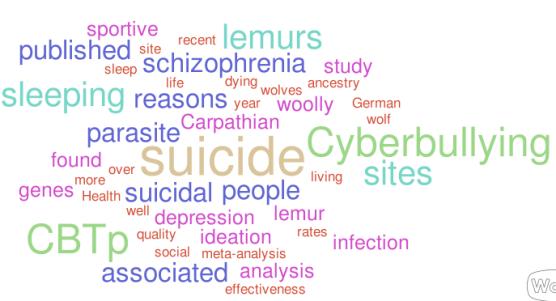

BMC Genomics: Genomic make-up of the Czechoslovakian Wolfdog
A recent trend in domestication is a selection of traits that closely relate to an animal’s wild ancestors. The Czechoslovakian Wolfdog (CWD), a cross between the Carpathian wolf and the German Shepard, is an example of this type of selective breeding. A study by Caniglia et al. published in BMC Genomics performed a genome-wide analysis of CWD to compare its genome with the parental population (Carpathian wolves and German Shepherds).
A genome-wide analysis of 170k Single Nucleotide Polymorphisms was performed in 12 unrelated CWD and 12 unrelated Carpathian wolves. Genotypes from these individuals were then compared to each other as well as genotypes of 355 dogs from 30 breeds. CWD genomes were distinct from Carpathian wolves and German Shepherds, but there were also genetic similarities. Within the CWD genome over 300 genes were more associated with wolf ancestry and over than 2000 genes were more associated with dog ancestry.
Interestingly, specific gene analysis found that the genes associated with wolf ancestry related to morphological phenotypes such as a narrow face, short ears, and a pointed chin while the dog-related genes were associated with communication and behavior such as brain development, sociality and cognition.
BMC Psychology: Cognitive behavioral therapy for people with schizophrenia
 Cognitive behavioral therapy for psychosis (CBTp) has been used to treat people with schizophrenia. Although the success of CBTp on core psychotic symptoms, such as hallucinations, are less than promising, a thorough assessment of the effectiveness of CBTp on non-symptomatic outcomes, such as quality of life, has yet to be determined.
Cognitive behavioral therapy for psychosis (CBTp) has been used to treat people with schizophrenia. Although the success of CBTp on core psychotic symptoms, such as hallucinations, are less than promising, a thorough assessment of the effectiveness of CBTp on non-symptomatic outcomes, such as quality of life, has yet to be determined.
A recent meta-analysis by Laws et al. published in BMC Psychology sought to determine the effectiveness of CBTp on functioning, distress, and quality of life in people with schizophrenia. A total of 37 randomized controlled trials were included in the meta-analysis.
CBTp showed mild effectiveness for functioning in people with schizophrenia, but this effect was not long lasting. No significant benefit of CBTp was found for distress or quality of life. The results of this meta-analysis suggest that CBTp may not be an effective treatment for non-symptomatic outcomes in people with schizophrenia.
BMC Public Health: Cyberbullying in Europe
 Cyberbullying entails intentional aggressive behavior via the Internet and social media sites to intentionally hurt their victims and can include acts of social exclusion, spreading rumors or direct threats. Cyberbullying amongst teenagers is rampant, and a study by Athanasiou et al. published in BMC Public Health analyzed cultural differences and predictors of cyberbullying victimization in eight different European countries.
Cyberbullying entails intentional aggressive behavior via the Internet and social media sites to intentionally hurt their victims and can include acts of social exclusion, spreading rumors or direct threats. Cyberbullying amongst teenagers is rampant, and a study by Athanasiou et al. published in BMC Public Health analyzed cultural differences and predictors of cyberbullying victimization in eight different European countries.
A total of 12,372 14-17-year olds from Germany, Greece, Iceland, Netherlands, Poland, Romania and Spain answered questionnaires related to socio-demographic variables and cyberbullying. Approximately 22% of adolescents experienced cyberbullying with the highest rates in Romania (37.3%) and the lowest rates in Spain (13.3%). Cyberbullying was also associated with higher rates of internalizing problems, which include social withdrawal and anxiety, as well as externalizing problems, such as aggression.
BMC Ecology: Lemur sleeping sites and parasites

Parasites can greatly impact the health of animals, and factors such as temperature, group size, and diet can influence parasite infection. A study by Hokan et al. published in BMC Ecology examined how sleeping site impacts parasite infection by comparing two nocturnal lemurs: the Milne-Edwards sportive lemur and the Western woolly lemur. Since both of these species have similar diets, live in the same habitat, are of similar size, and live in pairs, the authors were able to specifically analyze the effect of sleeping site.
The sleeping sites of twenty-six sportive lemurs and 22 woolly lemurs were recorded and feces was collected to analyze infection intensity and parasite species. Researchers found that sportive lemur sleep sites exclusively sleep in tree holes and will use the same sites repeatedly. In contrast woolly lemurs sleep on branches and vary their sleeping sites. Fecal analysis found that the probability of sportive lemurs shedding parasite eggs was three times higher than woolly lemurs.
These findings suggest that repeated use of tree holes as a sleeping site can increase parasite exposure and infection.
BMC Psychiatry: Reasons for living and dying in suicide
 Suicide is a global problem with over 800,000 deaths each year. The internal suicide debate hypothesis assumes that upon a suicidal crisis, individuals weigh reasons for living (e.g. family) versus reasons for dying (e.g. hopelessness) in their decision to commit suicide. A recent study by Brüdern et al. published in BMC Psychiatry studied reasons for living (RFL) and reasons for dying (RFD) in predicting future depression, suicidal ideation, and suicide attempts in suicide attempters.
Suicide is a global problem with over 800,000 deaths each year. The internal suicide debate hypothesis assumes that upon a suicidal crisis, individuals weigh reasons for living (e.g. family) versus reasons for dying (e.g. hopelessness) in their decision to commit suicide. A recent study by Brüdern et al. published in BMC Psychiatry studied reasons for living (RFL) and reasons for dying (RFD) in predicting future depression, suicidal ideation, and suicide attempts in suicide attempters.
Sixty suicide attempters admitted to the emergency department were provided questionnaires to measure depression, suicidal ideation, RFL, and RFD. The number of RFL did not predict future depression, suicidal ideation or suicide attempts, but more RFD at initial admission predicted greater levels of depression and suicidal ideation for up to 2 years as well as another suicide attempt 1 year after initial assessment.
Comments